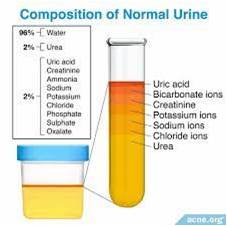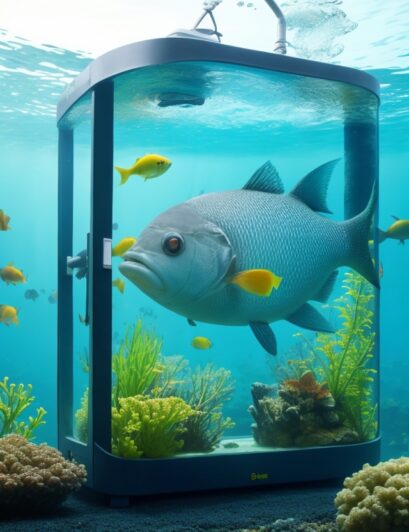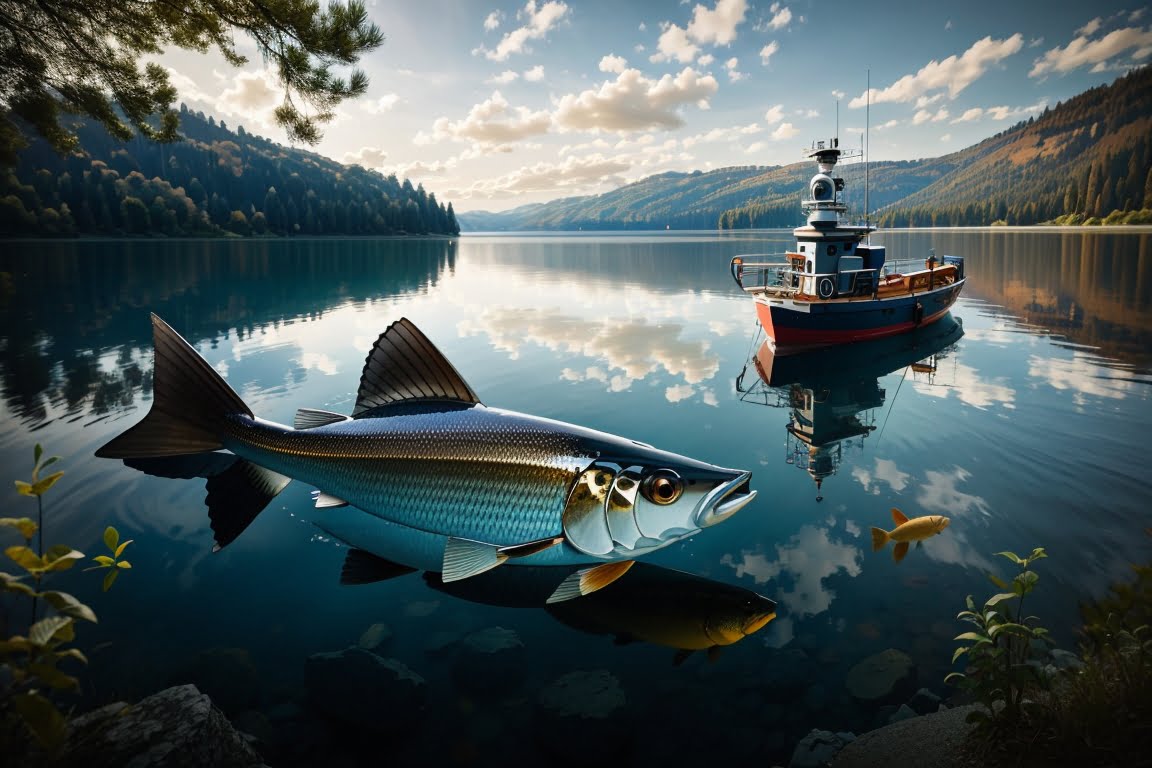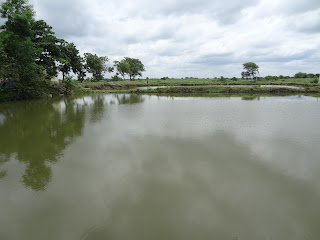Economic Importance of Fishes (By-products): Human beings are used the fishes in different forms or several by-products from time immemorial. Still today, millions of human beings suffer due to hunger and malnutrition and fishes food is a rich source and provide good staple food to tide over the nutritional difficulties of man.
Most of the captured and cultivated fishes are utilized as food, while others are distasteful and considered unsuitable for human consumption.
Similarly, the materials discarded during fish processing also become a waste. These fishes and discarded materials become an important source of raw materials to fish making for by-product in an industries and are used to produce several useful by-products.
Economic Importance of Fishes (By-products)
1. Fish as Food:
Fishes are a major source of food for human consumption, providing protein, fat, vitamins, and minerals. According to the Food and Agriculture Organization (FAO), the global fish consumption per capita reached 20.5 kg in 2018, the highest level on record.
Fish food is an important because, easily digestible, highly nutritious, zero-carbohydrate food, good for diabetics and other such patients.
A special feature of fish flesh food is rich content of vitamin B12 which is almost absent in plant food and also a good source of calcium and vitamin A.
Fish also contains polyunsaturated fatty acids, which are providing to protection against cardio vascular diseases.
Fish is a rich source of protein, vitamins and minerals with approximate composition as crude protein 14.2-22.8%, fat 0.6-2.4% and energy 76-161 Kcal/100 gm.
Besides the principal minerals in fish are Ca, Mg, P, K, Na, Fe, Mn, Br, I and Cu
Fish is to be considered as the Poor people diet. Because the costs much less in comparison to its food value.
The per capita consumption of fish has been 9 kg on an average upto 2017 as against estimated requirement of 11.0 to 12.0 kg.
Fish By-Products:
Fishes also provide various by-products, such as fish oil, fish meal, fish glue, fertilizers, and cosmetics. These by-products have various industrial and agricultural applications, such as animal feed, pharmaceuticals, biofuels, and leather.
Fish Oil:
The most important fish bye-product in an fishery industry is fish oil, which acts as a vehicle for fat soluble vitamins i.e. A, D, E, and K, as well as a source of essential fatty acids for the structure of cell and functions of cell membrane.
The oil of fish is obtained from fishes there are two main types viz. fish liver oil and fish body oil.
1. Fish Liver Oil:
Fish liver oil is obtained from larger fishes example- skates, rays etc. It contains rich vitamin A and D. The following are the Chemical composition of fish liver oil:
Fat — 55-75%
Proteins — 5-10%
Water — 20-36%
Cholesterol — 0.46-1.32%
Vitamins — A and D
Iodine — 158.7-166.6%
2. Fish Body Oil:
Fish body oil is By-products and it is obtained from the entire body parts. Generally, it is procured from non-edible fishes or from the wastes, discarded during the processing. More usually, the herrings (clupeoids), sardines, salmon, mackerel, sharks, etc.
Fish Meal (Food for Cattle):
Fish meal By-products and it is prepared from waste fishes left over after extracting oil from the fish. Fish meal also prepared from non-edible fishes of both, the small and large sizes.
Chemical Composition of Fish Meal:
Protein — 60-70%
Fat— 2-15%
Minerals — 10-20%
Calcium — 5 ± 1%
Phosphorus — 3 ± 1%
Iron — Trace amount
Iodine — Variable amount
Fish Manure:
Fish manure is a By-products prepared from surplus fishes or those unfit for human consumption or when the fishes get rotten due to bad preservation are used as fertilizers for coffee, tea, tobacco, and rubber plantation because it is rich in nitrogen and phosphates. During peak season, when there is a large supply of fishes or they are landed in spoiled conditions, they are sun dried by spreading them on the beach. The dried fishes are ground and converted into manure. (5-7% nitrogen and phosphate)
Fish guano:
Fish guano is prepared from the west fish materials and left after the extraction of oil. It contains 7 to10% of nitrogen and phosphates and considered a rich nutrient for the plants.
Isinglass:
It is a high-grade collagen produced from the air bladder or swim bladder of catfishes, carps, sturgeons, cods, etc. Isinglass powder is used for the clarification of wines, beer and vinegar.
Fish Glue:
Fish glue is a sticky or adhesive substance and is prepared from different wastes parts like- bones, scales, fins etc. discarded during processing. These are washed, ground and cooked with acetic acid in steam. Liquid is separated and reduce to form the fish glue. It is used as a strong adhesive for papers, files, wood,
leather and glass. Glue is prepared chiefly from cods and sturgeons.
Fish Leather:
The skin of some fishes, particularly those of sharks and rays are sometimes used by humankind, and are popularly called ‘Shagreen’. The skins of these fishes are used for making polishing and smoothing materials in place of sand paper. Specially coloured ‘Shagreen’ is used for covering for other ornamental
coverings or jewel boxes. The dried and treated skin is also used for preparing women shoes, moneybags, belts, suitcases, etc.
Fish Pearls:
The material obtained by scrape the silvery coating of the scales of certain cyprinid fishes like Alburnus and gold fish is used for polishing the hollow glass beads. These beads are then filled with wax and marketed as artificial fish pearls, used in jewelers.
Fish Soap:
The fins of sharks are dried and exported specially to China where they are used for the preparation of soaps and ready soap powder also prepared from fish and ready in market
Fish Biscuits:
Fish biscuits are prepared in Chile and Morocco. Fish flour is blended with biscuit mixture before baking.
Aesthetic Value:
As a hobby, some multicoloured fishes are cultured in aquaria for the decoration of houses (Aquarium). For Example – Gold fish (Carassius auratus), Angelfish (Pterophyllus), Mollusc fish (Macropodus) and different species of Colisa.
Fishes for Employment Generation:
As the fishes form a rich source of food, millions of people are employed in fishing industries and depend upon fisheries for their livelihood in various ways.
3. To control diseases
Fishes also important to Public Health (Larvicidal and Scavenger Fishes):
The causative agents of insects, crustaceans and mollusks are inhabitant of aquatic environment for few diseases attack to humanity. The larvicidal fishes are found in nature and they feed upon insects and their larvae viz.; mosquito larvae.
Since larvicidal fishes feed upon larvae of mosquito, they help in biological control of malaria and filaria.
Many others feed upon the molluscs and dead and decaying matters acting as scavengers.
Certain freshwater fishes like Clarias batrachus, H. fossilis and Bagarius bagarius feed on excreta.
Fish Insulin:
The large sized fishes are dissected so as to remove the pancreas for obtaining insulin. Pancreas of the Sharks is rich in insulin.
Fish Cartilage for Cure of Cancer:
In a recent scientific report (2004), it has been stated that Sharks are disease resistant; hence, these never become the victim of any disease. So much so, these are immune to cancer. The cartilage of Sharks, therefore, is used in making medicines for the cure of cancer.







